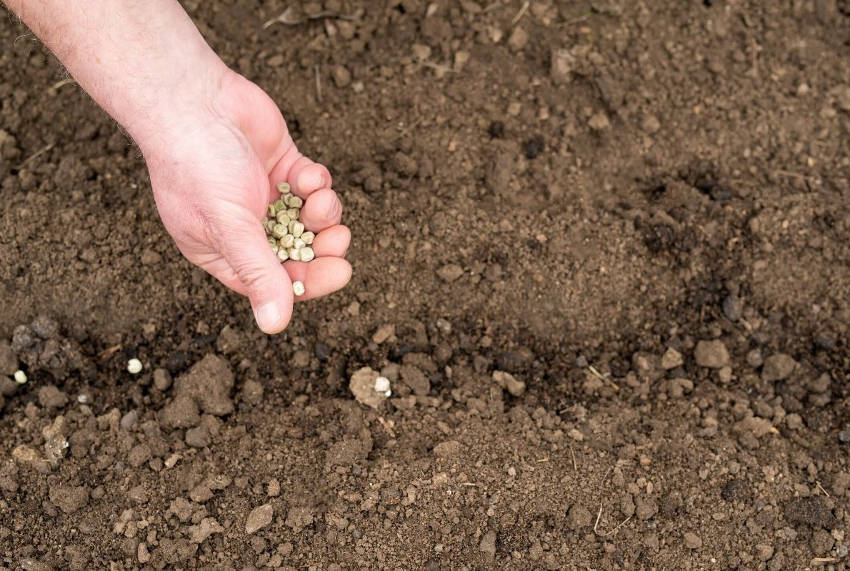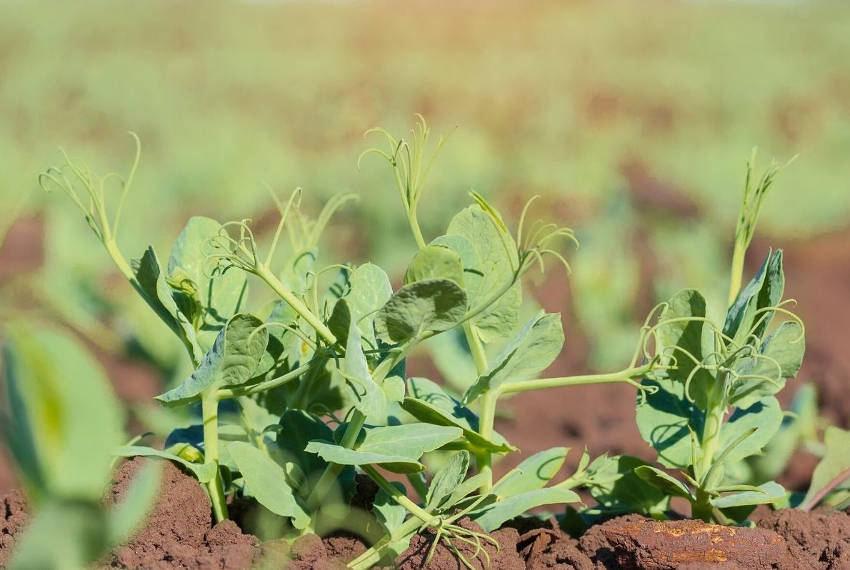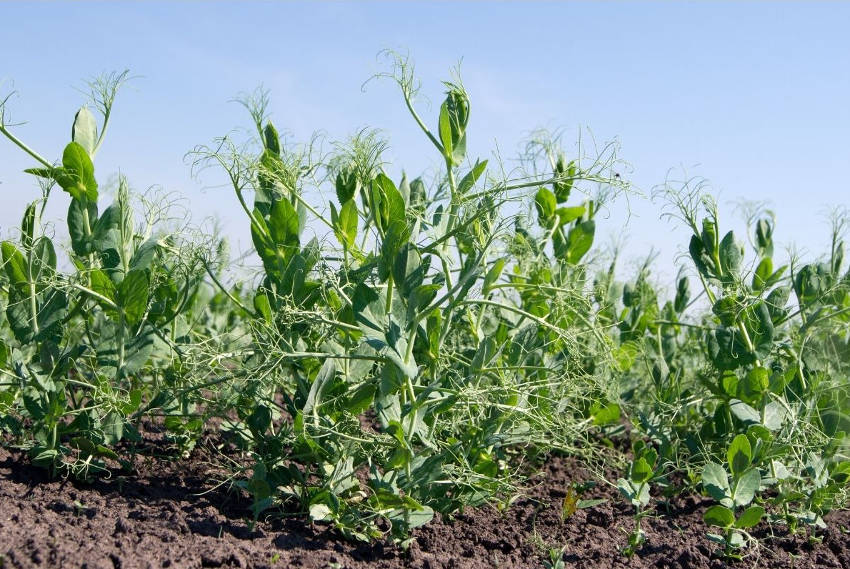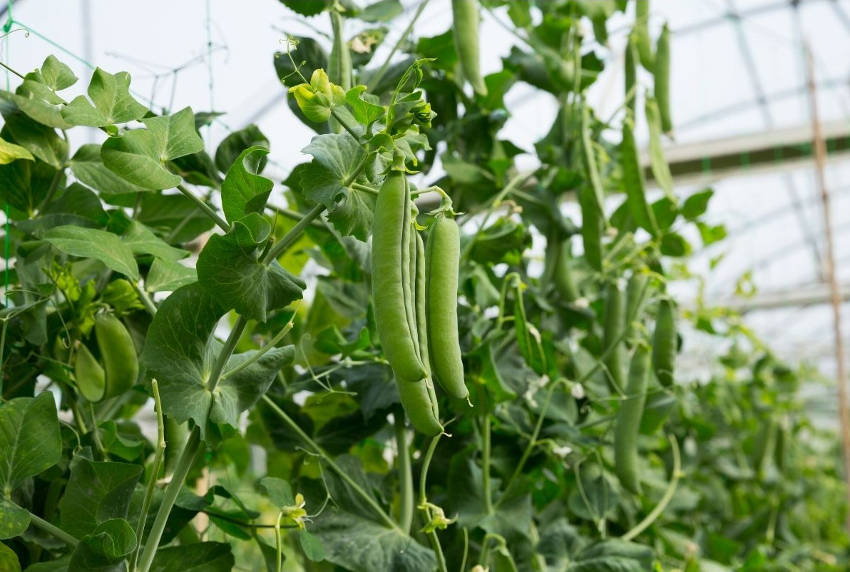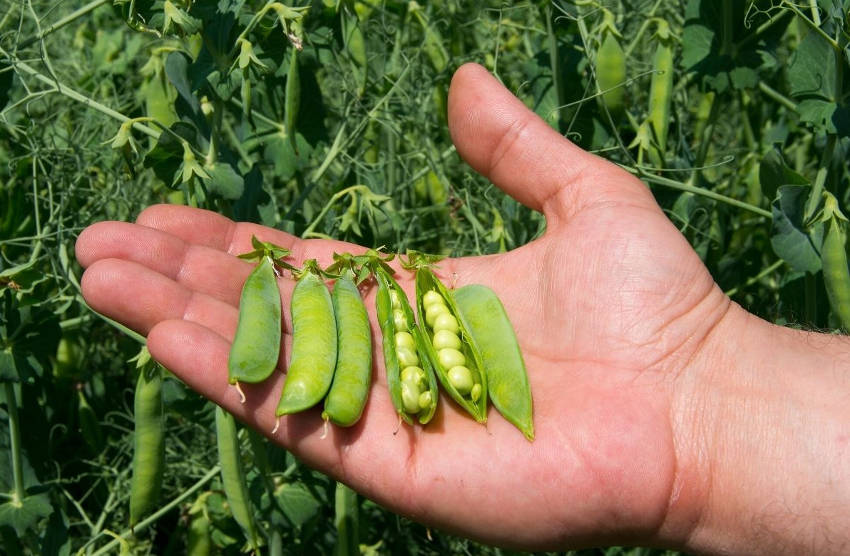There are few people who don't appreciate the humble pea. Even children who normally need cajoling to 'eat their greens' will often strategically ignore this veggie's colour, won over by the pea's innate sweetness.
But if you've never tasted homegrown peas, you've probably not realised just how sweet and tasty this legume can really be. The natural sugars found in peas start turning into starches the instant the pods are picked, and so for ultimate sweetness in the kitchen, minutes matter.
Growing your own is the only way to eat reliably fresh peas, and luckily it's not that difficult.
The Botany of Peas
Peas have the botanical name Pisum sativum, and are a herbaceous annual from the family Fabaceae. They're classed as legumes, and are close relatives of both beans and pulses.
Their ultimate origin is unknown, although they've been grown in Europe since prehistory and are now firmly established in agriculture worldwide.
Modern varieties of pea normally grow as a climber, sending out vines up to 1.5-1.8m in height, although dwarf or bush varieties are also available reaching a metre or even less. As they grow, the vines produce spidery tendrils which curl around the nearest support they can find. After a month or two, the plants produce small white flowers which after pollination grow into the seed-producing pods.
With the most familiar garden peas, also known as shelling peas, the pods will grow up to 10cm in length, with each containing five to ten peas. However, selective breeding over the centuries means that shelling peas aren't the only option.
Snow peas, or mange tout, produce flat, juicy pods with tiny seeds, and the whole pod is eaten. Sugar snap peas are somewhere in between snow peas and shelling ones, producing thickish crunchy pods with small, tender peas inside.
Peas' Nutritional Value
Peas don't often get the recognition they deserve for their nutritional value, and are rarely grouped into the trendy superfood category. However, they're one of the most nutritious crops to grow in a veggie patch.
They're full of vitamins A, C, B-complex, and K, making them a natural multivit in a convenient and tasty package. They're also rich in a wide range of essential minerals, including calcium, iron, copper, manganese, and zinc.
And as they're high in protein but low in fat, they make a great addition to a weight control diet, especially given their generous levels of insoluble fibre which improves digestion for a more balanced blood sugar level.
Peas in the Kitchen
As an ingredient, the pea's versatility is almost unrivalled. From germination onward, many parts of the pea plant are edible and pack a huge amount of flavour. The young, tender shoots can be used as a garnish or salad ingredient, giving a hit of pure pea sweetness along with a certain amount of cheffy flair.
As the pea plants grow, the side shoots and growing tips can be pinched out to help maintain the plant's shape and size. The delicious pinched out shoots are highly valued in Japanese cuisine, where they're known as green gold.
And of course, with garden or shelling varieties the peas can be lightly boiled as an accompanying vegetable, or slowly braised as the basis of a main dish. While young peas are tender and sweet, the older specimens can be mealy, but even peas past their best have a place in the kitchen, crushed or pureed and made into rissoles, soups, or dips.
But it's not only the familiar pea seeds which have a role. Younger shelling pea pods can be treated like snow peas or sugar snaps, eaten raw or used in stir fries and other quickly cooked dishes. As the pods age, they become unpalatably stringy, but can still lend their flavour to veggie stocks, or be blended with cream into a hearty soup.
How to Grow Peas
For a quick fix of pea flavour, sow a few well-soaked peas (if available sprouting peas are best) in a tray of compost and place on a sunny windowsill, watering daily to keep the soil moist. In two to three weeks the seedlings should be 8-10cm tall and can be cut for immediate use. This can be done all year round.
For a true crop of peas, choose a well-drained location which isn't too exposed to wind. While peas prefer full sun, they also thrive best in cooler temperatures, so in hotter climates a little midday or afternoon shade could be beneficial.
Before sowing, dig plenty of organic compost into the soil to a depth of 30cm or so to feed the long tap roots, but beware of adding manure which can boost foliage growth at the expense of pods and peas.
Seeds can be sown direct from spring onward, with new sowings every fortnight for a longer harvest. In areas without harsh winters, a late autumn or early winter sowing can overwinter to provide a harvest in mid-spring.
To start seedlings off under cover, grow them in root trainers or empty cardboard tubes to prevent root damage when transplanting, and then move to their final location when the seedlings are 10-15cm high.
The final spacing will depend on the variety grown, although for non-dwarfing plants aim for 10cm apart with 75cm between rows.
All peas will require some degree of support. Traditionally, twiggy branches were used as they provide plenty of hooks and outgrowths for the pea tendrils to wrap around. However, a thin trellis or sturdy netting is equally suitable.
Dwarf or bush varieties can be self-supporting when grown in groups, but placing a few short twigs among their number will provide a supporting foundation to build on.
Once the peas have germinated, water well and regularly, being careful not to splash the foliage too much. In good soils, feeding isn't essential, although a general purpose vegetable and herb feed can be used occasionally once flowering starts.
Harvesting Peas
Depending on the variety and growing conditions, peas will be ready to harvest roughly 10-16 weeks after germination. Picking young pods regularly will encourage future growth to lengthen the harvest, while the longer you leave the pods on the plant the larger and mealier the peas will become.
Once picked, shell the peas and use them as quickly as possible. If you can't use them within an hour or two, keep them very cool to preserve their sweetness, or freeze them for future use.
Common Pea Pests, Diseases, and Other Problems
Although peas are a relatively resilient plant given good growing conditions, there are a few common problems which can crop up.
- The seeds are sweetly attractive to both mice and birds, which can mean your peas become a meal for them even before germination. Starting seedlings under cover will help, or fit secure netting over seed beds for outdoor sowings.
- Slugs and snails are a perennial danger. Sowing under cover gives seedlings some protection at their most vulnerable stage, while your favourite organic snail-protection methods should be used as the plants grow.
- Pea and bean weevils can feed on the growing plant's foliage, creating small notches on the edge of younger leaves. However, this is mainly a cosmetic issue, rarely causing enough damage to impact growth.
- A more serious pest is the pea moth caterpillar which burrows inside the pods and empties them from the inside, leading to disappointment when you split open the pod. The best way to handle these pests is to time your harvests away from high summer, which is when the caterpillars are at their hungriest.
- Pea root rot can devastate young seedlings and put mature plants under extreme stress. It's caused by a fungal infection in the soil, and the only way to treat it is to apply plenty of nitrogen-rich fertiliser, in the hope that the plant's growth will outpace the effects of the fungus. However, this will tend to reduce yields considerably.
- Powdery mildew can be a problem, leading to dusty white leaves, reduced cropping, and even plant death in extreme cases. To reduce the severity, ensure the plants have good air circulation, and carefully water the soil rather the plant itself.
Nearly all vegetables taste better homegrown than store-bought. But the difference with peas is so profound, it's a veggie that every gardener should try growing at least once.
